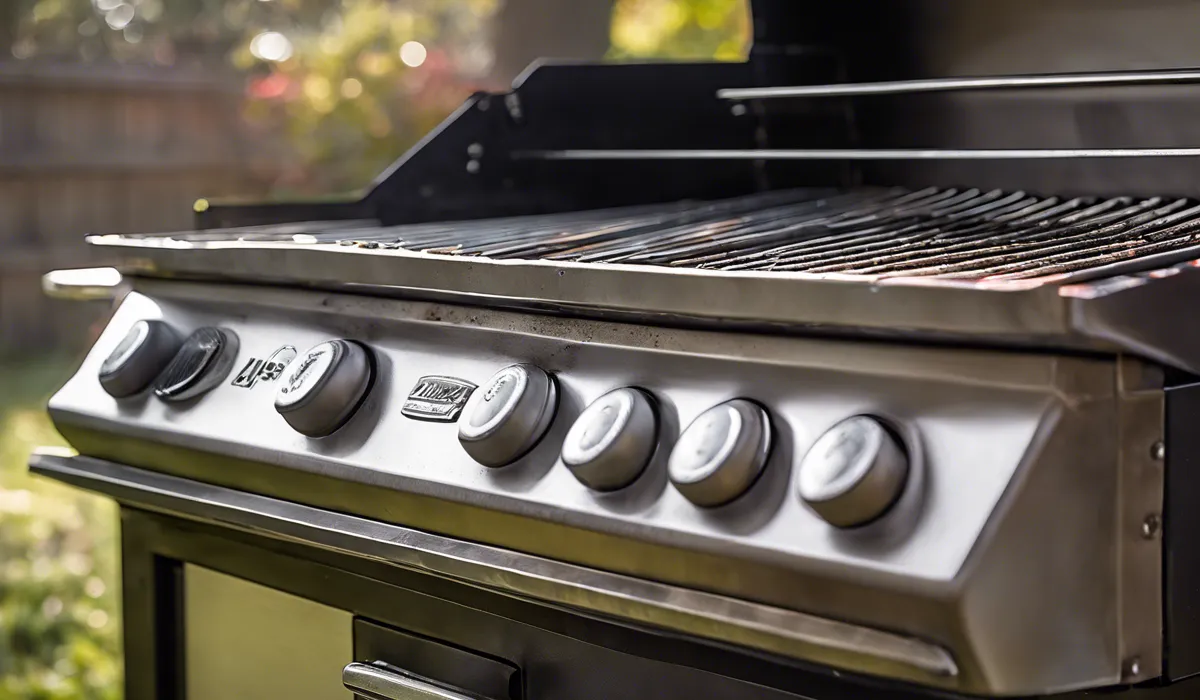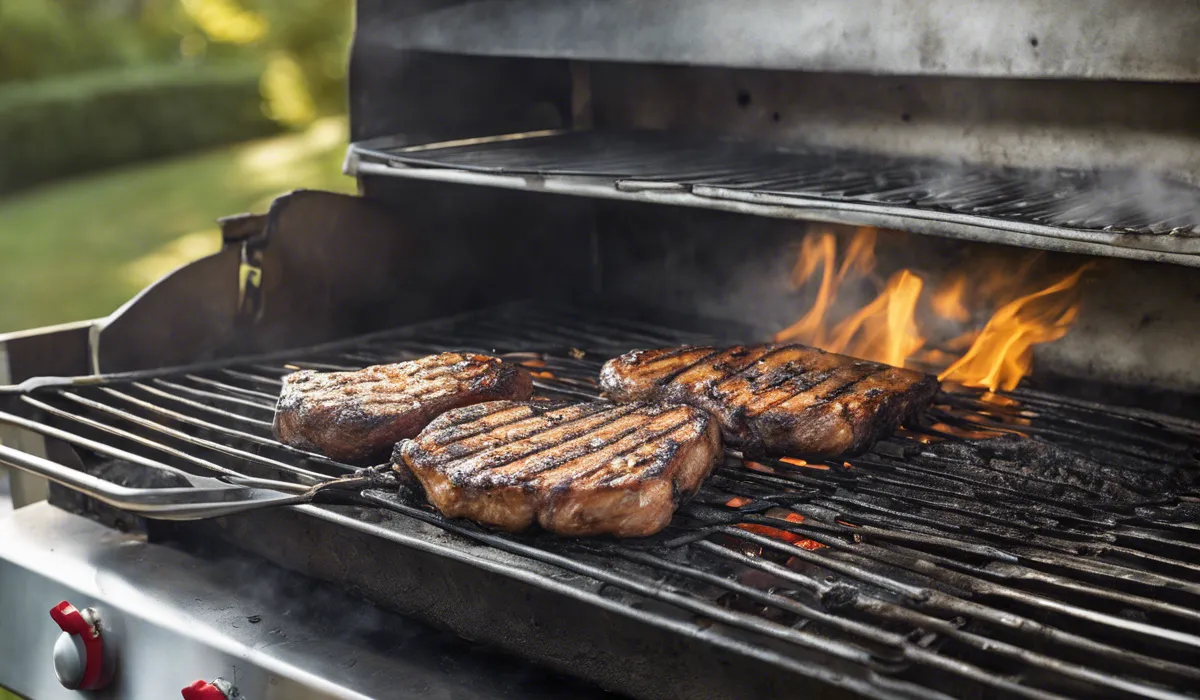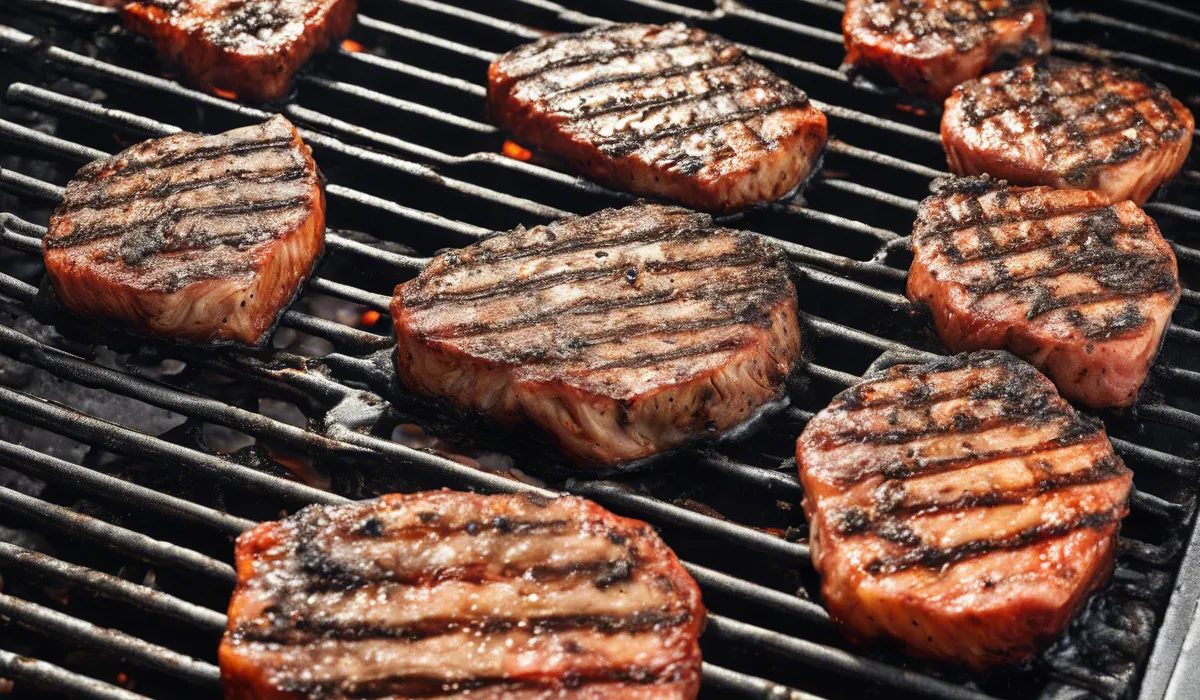Mold on a grill is potentially dangerous as it can contaminate food with harmful toxins. It’s important to thoroughly clean the grill before use to ensure safety. Always inspect and maintain your grill regularly to prevent mold growth.
Understanding Mold on Your Grill

Definition of Mold
Mold is a type of fungus that can grow almost anywhere there is moisture and organic material.
On grills, mold appears as fuzzy or slimy spots which can be various colors like green, white, or black.
These spores thrive in environments where they can latch onto food residues and grease left behind after cooking.
Common Types Found on Grills
Grills may harbor several types of mold including Aspergillus, Cladosporium, and Penicillium.
These types are not unique to grills, as they are commonly found in many environments, but they can settle on the surfaces where we prepare our food if not properly maintained.
How Mold Develops on Grills?
Mold spores are airborne and can settle on grill surfaces when it is not in use. Once they come in contact with grease, food particles, and moisture, they begin to grow and multiply.
The problem often becomes noticeable after the grill has not been used for a period, especially if it has been stored in a damp location.
Favorable Conditions for Mold Growth
Mold loves dampness, warmth, and food sources. Grills that are left outside and exposed to the elements or are not covered properly can become breeding grounds for mold.
High humidity and temperatures between 40 and 100 degrees Fahrenheit create ideal conditions for mold to flourish.
Periods of Grill Inactivity and Moisture
When grills are not used for extended periods, such as during the winter or between barbeque seasons, they can accumulate moisture from rainfall or condensation.
This inactivity allows mold to establish itself and grow unchecked until the grill is used again.
Difference Between Mold and Grease Buildup
It’s important to distinguish mold from a simple buildup of grease and food particles. Mold typically appears fuzzy or slimy and may spread over larger areas.
Grease and food particles, on the other hand, often look like darkened crusty spots that are localized to where food was cooked or where grease has dripped.
Health Implications of Grilling with Mold

Potential Health Risks Associated with Mold Exposure
Inhaling or ingesting mold spores can lead to allergic reactions, respiratory issues, and other health complications.
When mold is present on a grill, there is a risk that these spores can transfer to the food being cooked, potentially causing illness to those who consume it.
Specific Dangers of Ingesting Moldy Food
Eating food contaminated with mold can lead to food poisoning. Some molds produce mycotoxins, which are toxic substances that can cause serious health problems if ingested in large quantities.
It is crucial to avoid cooking on a moldy grill to prevent these risks.
Vulnerable Groups and the Impact on Respiratory Health
Individuals with weakened immune systems, allergies, asthma, or other respiratory conditions are particularly susceptible to the effects of mold.
These groups may experience more severe reactions, such as difficulty breathing or an exacerbation of their existing conditions.
Mold-related Diseases and Symptoms to Watch For
After being exposed to mold, some individuals may develop symptoms such as coughing, sneezing, skin irritation, and headaches.
In severe cases, exposure can lead to mold-related diseases like bronchitis, pneumonia, or hypersensitivity pneumonitis. If symptoms arise after using a moldy grill, it is important to seek medical attention.
Prevention and Safe Removal of Mold from Your Grill

Regular Cleaning and Maintenance to Prevent Mold
Preventing mold from taking hold on your grill is key. Regular cleaning, immediately after use and before storing the grill, removes the organic material that mold spores need to grow.
Additionally, ensuring the grill is dry before covering it can minimize the moisture needed for mold to thrive.
Best Practices for Grill Usage and Storage
To keep your grill mold-free, always scrape off food particles and grease after each use. When storing your grill, cover it with a waterproof cover and keep it in a dry, well-ventilated space.
This reduces the chances of moisture buildup which can lead to mold growth.
Cleaning Agents and Tools Recommended for Mold Removal
White vinegar, baking soda, and dish soap are effective and safe cleaning agents for removing mold.
Pair these with a grill brush or sponge to scrub away mold. For tougher mold, a diluted bleach solution (1 part bleach to 10 parts water) can be used, but it should be rinsed thoroughly afterward to prevent contamination of food with bleach residues.
Step by Step Guide to Safely Remove Mold from a Grill
Begin by wearing protective gloves and a mask to avoid inhaling spores. Remove grill grates and other removable parts and soak them in a solution of dish soap and hot water.
Scrub all surfaces of the grill to remove mold, rinse with water, and allow to dry completely before reassembling.
Safety Precautions and Protective Gear
Always wear gloves, a mask, and possibly goggles when cleaning mold to protect your skin, lungs, and eyes from exposure to mold spores and cleaning agents.
Cleaning Process Before Next Use of the Grill
Before cooking on the grill again, heat it to a high temperature for at least 30 minutes to kill any remaining mold spores.
This also helps to burn off any cleaning agent residues. After it has cooled, wipe the grill surfaces with a damp cloth to remove any ash.
Tips for Ensuring the Grill Remains Mold-Free
Regularly inspect your grill for signs of mold, especially before and after prolonged periods of non-use.
Keep the grill dry, clean, and covered with a waterproof cover. If you live in a high-humidity area, consider using moisture absorbers or storing the grill indoors to further protect against mold.
Seasonal Considerations for Grill Care
As seasons change, so do the conditions that affect your grill. In winter, ensure snow and ice do not accumulate on your grill.
During summer, watch for increased humidity and take extra care to keep the grill dry and clean.
Advice for Dealing with Persistent Mold Issues
If you are experiencing ongoing mold problems, it may be necessary to reevaluate where and how you store your grill.
Ensure the area has good air circulation and consider using a dehumidifier. If mold persists, consult with a professional to identify and address the underlying issues.
FAQs About Mold on Grills
Is mold on a grill dangerous?
Yes, mold on a grill is potentially dangerous as it can produce harmful toxins that may contaminate food and pose health risks.
What should I do if I find mold on my grill?
If you find mold on your grill, you should thoroughly clean and disinfect the grill before using it to cook food to ensure safety.
Can cooking on a moldy grill make you sick?
Yes, cooking on a moldy grill can make you sick as mold can produce toxins that might contaminate the food.
How can I prevent mold from growing on my grill?
Prevent mold growth on your grill by regularly cleaning, drying, and maintaining it, and by covering it properly when not in use.
Is it safe to eat food from a grill that had mold on it once it’s cleaned?
Once a grill contaminated with mold has been thoroughly cleaned and disinfected, it is generally safe to cook and eat food from it.
Final Thoughts
Mold presence on grills poses a health risk due to the potential release of toxins into food. Ensuring the grill is thoroughly cleaned before use is crucial for safety.
Regular inspection and maintenance of the grill are essential to prevent the occurrence and growth of mold.
